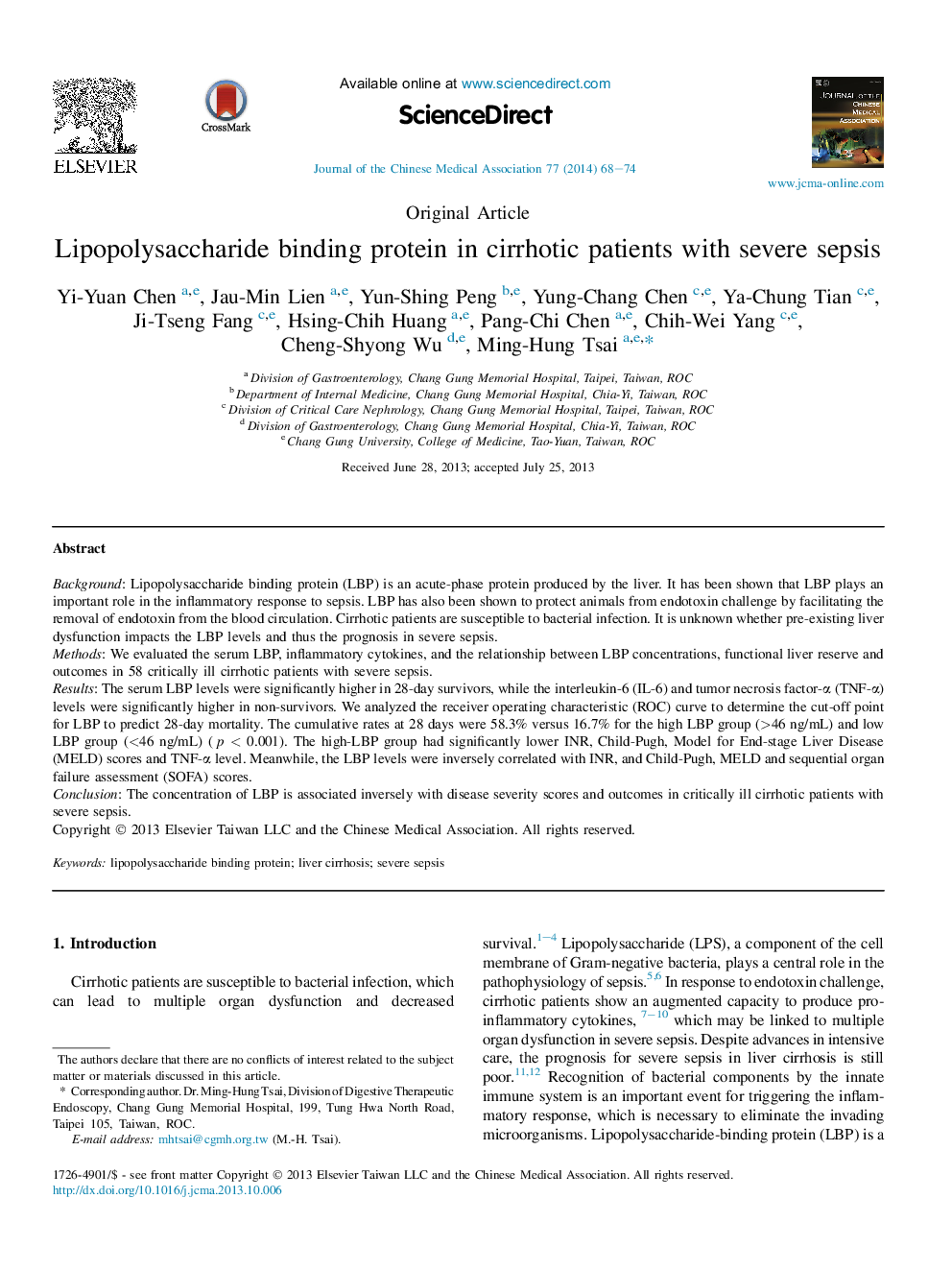| کد مقاله | کد نشریه | سال انتشار | مقاله انگلیسی | نسخه تمام متن |
|---|---|---|---|---|
| 3476304 | 1233252 | 2014 | 7 صفحه PDF | دانلود رایگان |
BackgroundLipopolysaccharide binding protein (LBP) is an acute-phase protein produced by the liver. It has been shown that LBP plays an important role in the inflammatory response to sepsis. LBP has also been shown to protect animals from endotoxin challenge by facilitating the removal of endotoxin from the blood circulation. Cirrhotic patients are susceptible to bacterial infection. It is unknown whether pre-existing liver dysfunction impacts the LBP levels and thus the prognosis in severe sepsis.MethodsWe evaluated the serum LBP, inflammatory cytokines, and the relationship between LBP concentrations, functional liver reserve and outcomes in 58 critically ill cirrhotic patients with severe sepsis.ResultsThe serum LBP levels were significantly higher in 28-day survivors, while the interleukin-6 (IL-6) and tumor necrosis factor-α (TNF-α) levels were significantly higher in non-survivors. We analyzed the receiver operating characteristic (ROC) curve to determine the cut-off point for LBP to predict 28-day mortality. The cumulative rates at 28 days were 58.3% versus 16.7% for the high LBP group (>46 ng/mL) and low LBP group (<46 ng/mL) (p < 0.001). The high-LBP group had significantly lower INR, Child-Pugh, Model for End-stage Liver Disease (MELD) scores and TNF-α level. Meanwhile, the LBP levels were inversely correlated with INR, and Child-Pugh, MELD and sequential organ failure assessment (SOFA) scores.ConclusionThe concentration of LBP is associated inversely with disease severity scores and outcomes in critically ill cirrhotic patients with severe sepsis.
Journal: Journal of the Chinese Medical Association - Volume 77, Issue 2, February 2014, Pages 68–74
